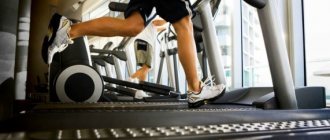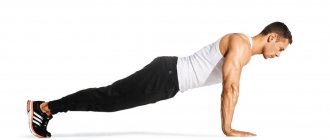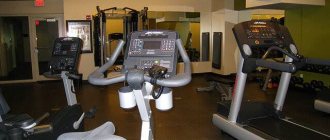For most people, running in the morning is the most affordable way to get a boost of energy for the whole coming day and keep your body in good shape. This sport does not require significant financial costs for the purchase of equipment and expensive subscriptions to the fitness center, and makes it possible to effectively lose weight and strengthen muscles.
Those who have been involved in sports for a long time are familiar with the rules for distributing the intensity of activities and loads. We advise beginners to practice morning jogging, especially if they have various types of diseases and excessive weight, only after consulting a trainer and a doctor. They will help you create a personal training plan.
Why should you run in the morning?
If you're still unsure whether it's worth sacrificing a precious hour of sleep in favor of a morning jog, check out the benefits you can get from such workouts:
- you can get rid of excess weight in the shortest possible time;
- the heart and blood vessels will be in perfect order;
- you will become so resilient that you can easily do without an elevator;
- viruses will bypass you;
- sleep will become sound, without night awakenings and nightmares;
- you can wake up without an alarm clock;
- forget about stress and depression;
- you will make new friends and acquaintances who also want to join a healthy lifestyle.
TOP 5 tips: how to train yourself to run in the morning?
We've come to the most interesting part - practical tips for getting used to morning jogging:
- As we already said, the first tip is to find motivation for yourself.
If you don't need to lose weight or win competitions, you can come up with an incentive for yourself. For example, drink a cup of your favorite coffee only after a run. If the workout was missed, you are left without coffee.
A suitable attitude would be: “The most difficult thing comes first.” After a run, even difficult things will seem much easier!
- Get ready in the evening: clothes, shoes, everything for breakfast, favorite playlist. And most importantly, go to bed 7-8 hours before getting up to get enough sleep. Be sure to turn off the TV, laptop, and notifications on your phone before going to bed;
- Challenge yourself on social media. Then your subscribers will follow your successes. You definitely don’t want to lose face and oversleep. By the way, this is a great way to find a running partner. You can challenge yourself and your friend;
- Sign up to participate in some competition and start preparing for it. Let it be a small local race or a distant half marathon. Once you are signed up, there is practically no going back. This method is well suited for enthusiastic people who love to win;
- Place the alarm clock as far away from you as possible or hide it. When you get up to turn it off, don't go back to bed. Follow the “small tasks” method without thinking about the upcoming workload.
First tell yourself: “I’ll just brush my teeth and then go to bed,” then “I’ll just get dressed and then go to bed.” The main thing is not to lie down, but to hold on until you go outside.
Why should you run in the morning?
In fact, running at any time of the day is beneficial, but morning cardio has some serious benefits.
- Burning fat in the morning is much more productive, since glycogen reserves, which the body uses as an energy reserve, are minimal at this time. Therefore, at the beginning of the day, just a 20-minute run is enough to start the process of recycling fat ballast. And in the evening this may take 2-3 times longer, which makes the training ineffective.
- After a night's rest, the body requires activity, and therefore any physical activity is much easier to bear than at the end of the day.
- The compression load on the spine after waking up is insignificant, since this part of the musculoskeletal system, like the entire body, receives sufficient rest at night. Therefore, you can run safely without fear of back pain.
- In the morning, a person needs a powerful boost of energy, while in the evening it is unnecessary. However, nothing prevents you from taking a walk before bed for your own pleasure and admiring the sunset.
How long should you run in the morning?
How much time you need to run in the morning depends on several factors:
- floor,
- age,
- level of physical fitness,
- health conditions,
- build.
The best option for such a workout for beginners is 10–20 minutes at an average pace. After a week, when the body adapts to the stress, the jogging time should be gradually increased, bringing it to 40–60 minutes. The duration of running sessions at a fast pace should be no more than 20–40 minutes.
Regularity is also extremely important, so run at least 4-5 times a week. You can train every other day, or every day, and on the weekends give yourself a well-deserved rest. However, this does not mean that you can lie down on the couch for two whole days. It's better to spend your free time usefully. For example, devote a couple of hours a day to walks in the fresh air.
The choice of time for running is also important. So, in the summer, it is better to start training at 6–7 am, when the sun has not yet had time to gain strength and the air temperature is as comfortable as possible. In winter, the start time is shifted by 1–2 hours.
Jogging in the morning. How much should you run to lose weight?
A typical mistake of those who want to lose weight through running is to train until they are completely exhausted in order to lose as much as possible at once. This approach is not only meaningless, but also dangerous to health. Physical activity with significant weight creates a dangerous load on the organs of the cardiovascular, respiratory and musculoskeletal systems. To avoid injuries and pathologies, you should balance your strength with your own weight.
- 110 or more kilograms . Intense loads are strictly contraindicated. Running at a slow or medium pace (distance 75–100 meters) alternates with walking. The total training time is no more than 20 minutes. With each subsequent lesson, we increase this time by 5 minutes. We run every other day.
- 85–110 kilograms . Classes are held daily for 20 minutes, with constant progression. You can change the pace of running with the obligatory transition to a step.
- 60–85 kilograms . We also start running 20 minutes a day. You can cover up to 500 meters without taking a step. Speed – no more than 10 km/h. After a month of working in this mode, the duration and pace of classes increase.
- Less than 60 kilograms . The running intensity is high and constantly increasing. The duration of classes is from 30 minutes per day.
Otherwise, you won’t be able to break through the training plateau, forcing fat to burn, with such a physique.
People who are overweight are strongly advised to choose running shoes with shock-absorbing soles to reduce stress on their joints.
Breakfast before a run – is it necessary or not?
If you are primarily planning to lose weight, you should not eat a large breakfast. It is enough to drink a glass of sweet tea or other drink containing sugar. In cases where the main goal is not losing excess weight, but maintaining good physical shape and health, you can have breakfast this way:
- oatmeal;
- whole grain toast;
- energy bar;
- flakes;
- sandwich;
- cocktail of vegetables or fruits.
Note! In any case, it is important not to overeat before jogging to avoid upset of the digestive system.
How to run in the morning?
Strict adherence to running technique will help a novice athlete get involved in the training process faster and avoid injuries. Here are its main principles:
- You need to start your workout with a light 10-minute warm-up. It includes a set of simple exercises to warm up the muscles and increase the elasticity of the ligamentous-articular apparatus: walking in place with the knees raised high, Jumping Jack, lateral lunges with pelvic transfer, running with shin sweeps, etc.
- You don’t need to start actually running right away. We walk the first 50–100 meters, after which we gradually increase the pace. If serious discomfort arises during training: a tingling sensation in the side, there is not enough air, the pulse has increased greatly - we go back to walking. If the break does not help, stop training.
- While running, the body should be tilted slightly forward, and the arms should be bent at the elbows and work in unison with the legs. We land on the entire foot or heel, but in no case on the toe.
- It is very important to breathe correctly: inhale only through your nose, but you can also exhale through your mouth. In winter, this will help avoid colds. Between inhalation and exhalation you need to take 2-4 steps.
- You cannot make sudden movements or quickly change the rhythm. This can cause injury.
- Monitor your heart rate with a fitness bracelet. Normal heart rate while jogging is 120–150 beats per minute. Try not to exceed these values.
At what pace to run
Start slowly, for the first 2 kilometers your body will still get used to it and wake up, try not to look at the pace on the clock and don’t push yourself. At this time, it is better to distract yourself and watch how everything around you wakes up.
Once you are fully awake, you can slightly increase the pace, but do not go beyond your comfort zone. Run at a pace at which you can comfortably talk - then your morning jog will bring you maximum benefit and pleasure.
Feeling very good? – Incorporate 2-3 small switches into your run (accelerate for 50-60 meters) or add some running exercises (30-40 meters is enough, for example, side jumps left / right side, running with a high hip lift, with straight legs or running with your back forward). Don't overdo it, it should be a pleasant game to feel how the body turns on and the muscles become more responsive and elastic. No pressure or patience.
What style is best for beginners to run?
People who are just starting cardio training and want to lose weight with it can run in several styles.
- Easy cross . Its main difference from the classic one is that you can run short distances (500–800 meters) on straight terrain. Ideally, you should cover at least 2 km without stopping, but for beginners it is better to do this in stages: changing to a step every half a kilometer.
- Interval running . One of the best fat burning techniques, the essence of which is to change the speed every 100 meters:
- slow running;
- running at an average pace;
- running with maximum acceleration;
- running at an average pace;
- Slow running and further according to the described scheme.
The cycle is repeated up to 3-4 times per workout. Once your body adapts to this routine, try running in intervals of 200 meters, then 300 meters, etc.
- Classic cross (cross-country running). And this is an option for advanced people, helping to burn calories with a vengeance. Ideally, the route should run through hilly terrain with steep ascents and descents, so you can only train in this style outside the city.
The technique here is somewhat different: you need to run up the hill as quickly as possible so that the leg muscles do not have time to acidify. When descending, the legs and arms must work even more often, but only in order to shorten the so-called flight phase. In other words, you need to run from the mountain, and not fall, following the force of inertia. When lifting, keep your body straight or slightly tilt it forward. When descending, pull back a little to avoid unnecessary acceleration.
Advantages and Benefits
It is impossible to overestimate the health benefits of running, since it affects every subsystem of the body. Everyone should know the benefits of running in the morning:
- the body is saturated with oxygen: in the morning the air is clean and fresh, because there are still no car exhaust gases, industrial exhausts and dust polluting the atmosphere;
- the air moistened with dew invigorates and tones;
- running trains endurance well and develops self-discipline;
- the heart muscle and the cardiovascular system as a whole are strengthened by saturating all systems with oxygen, which optimizes their functioning;
- due to the accelerated pumping of blood by the heart, metabolic processes are accelerated, which improves well-being;
- the figure becomes toned, the muscles become elastic, and the silhouette becomes more prominent;
- posture is straightened;
- due to the active production of sweat, harmful toxic substances are removed from the body along with calories;
- accessibility, because running does not require any financial expenses (except for the purchase of sports shoes and equipment, if you do not have any).
Interesting! Scientists have proven that jogging improves your mood, because during exercise, happiness hormones - endorphins - are released. Therefore, running is also an excellent tool in the fight against depression.
The benefits of running in the morning for women
In addition to the general advantages, running has special benefits for women, which are as follows:
- youth is prolonged and the appearance of wrinkles is delayed by 5-10 years;
- intense running gets rid of cellulite, making the stomach, thighs and buttocks attractive;
- long-term exercise improves liver function, thereby reducing cholesterol levels;
- getting rid of puffiness is an important plus for many girls, and due to the natural drainage of muscles, excess fluid is removed from the body, which replaces the use of calcium-removing diuretics;
- running is also good for the skin: since during training, oxygen is supplied at the cellular level, the dermis remains fresh and acquires a healthy shade;
- natural massage of female internal organs, which is carried out naturally while running, is the prevention of many gynecological diseases.
The best uniform for women would be loose clothing made from mixed fabric compositions that provide good air exchange, do not absorb sweat, and do not rub or compress body parts.
Additional tips for new runners
We figured out how and how much to run in the morning. But there are other tricks that will help make such workouts more productive and enjoyable:
- start training no earlier than 30 minutes from the moment you wake up;
- take a shower to invigorate yourself;
- drink a glass of water or kefir so as not to run on an empty stomach, but at the same time stimulate metabolic processes (you will have a full breakfast after your workout);
- try to run on dirt roads (this will create an additional shock-absorbing effect);
- do not talk or drink water while running;
- after maximum acceleration, stop and gradually switch to slow running;
- in bad weather conditions (especially ice), cancel the workout;
- equip yourself correctly (you can read more about choosing clothes and shoes for running in this article);
- It’s more fun to run with music, but it’s better to replace a heavy smartphone with a lightweight player;
- It is better to plan your jogging route in advance so that there are fewer cars and more green spaces.
What to eat after a morning run?
Breakfast after running should be nutritious, rich in proteins, carbohydrates and fiber. What to eat after your morning workout:
- egg dishes: scrambled eggs, omelet, poached egg, boiled egg;
- boiled chicken;
- porridge with fruits and nuts: oatmeal, buckwheat, barley, pearl barley, corn, etc.;
- vegetables and fruits: vegetable or fruit salad, cutting fresh vegetables and fruits;
- sandwiches: with cheese, egg and herbs; with cottage cheese, avocado and salmon; with cheese and ham;
- dishes made from dairy products: cottage cheese with fruits and nuts, a glass of yogurt or kefir, cottage cheese casserole, cheesecakes;
- isotonic drink, tea, coffee, water;
- protein shake, protein bars.
How should a beginner runner eat?
Some more interesting and useful information. Scientists have calculated that to burn 1 kg of fat you need to run for at least 19 hours. That is, in order to lose 10 kg it will take about 6 months of daily training. This is probably not quite the result that many were hoping for.
“How much should you run in the morning to speed up this process?” - you ask. Without a balanced diet, it will take a very long time and with a high risk of gaining weight back. Therefore, it is recommended to radically reconsider your diet.
Pay special attention to breakfast, since the calories spent during training need to be quickly returned. The question arises: why did we burn them then, and wouldn’t this give additional weight gain? Not if those calories are right. First of all, a runner needs a solid energy boost, which can be obtained from slow carbohydrates (mainly cereals). Fast carbohydrates, however, are also needed, but not all of them. The ideal option for a good carbohydrate breakfast is oatmeal with berries, fruits or dried fruits.
What about proteins? Beginning track and field athletes also need a lot of them (0.6 g per 1 kg of weight). Therefore, after a run, the menu must include protein foods: boiled or scrambled eggs, omelet, cottage cheese, yogurt, etc.
How to eat throughout the day, everyone decides for themselves. You can follow the classic scheme: a hearty breakfast, a medium lunch and a light dinner. Or eat a little, but often (5-6 times a day). The main thing is to consume fewer calories than you burn (on average, 15–20%). However, with daily running exercises, their consumption increases significantly, and at the same time the appetite. Therefore, the risk of overeating naturally increases, which can easily reduce all efforts made to nothing. The natural complex for safe weight correction KiloLight .
The drugs in this series help overcome food addiction and saturate the body with truly valuable nutrients, many of which are extremely problematic to obtain from the daily diet.
In addition, KiloLight provides reliable support for connective tissue, the weakness of which against the background of rapid weight loss leads to such unpleasant consequences as varicose veins, cellulite, stretch marks on the skin, etc. And the white cinquefoil root included in this complex stimulates the functioning of the thyroid gland, the main regulator of metabolic processes in our body.
Don't know how to overcome the craving for late-night snacks? The evening preparation of the KiloLight will help you resist unnecessary temptations and set yourself up for a sound and healthy sleep, so that in the morning you will be full of strength and energy before your next workout.
You can purchase this innovative complex in pharmacies and specialized online stores.
Which app is best for running?
During the first week of training, I went through a couple of dozen fitness programs for runners. Some were expensive but didn't have all the useful features, others offered subscriptions, and others were simply full of annoying ads.
Unfortunately, most of the popular applications in the sports niche are frankly average, but at the same time they will satisfy the majority of modern users.
I can recommend the following apps for beginner runners:
Adidas Running
A long time ago, the application was called Runtastic and had a paid Pro version with advanced features. Later, in the wake of the popularity of freemium, the utility was switched to subscription, and even later the application was bought by Adidas.
It's still a good and functional program. Even if you use it for free, it has everything you need. When preparing for a marathon or competition, you can choose a special program and receive personalized recommendations, but these features are only available by subscription.
Not a bad app, but it requires registration and many features are only unlocked after payment.
Nike Run Club
A free application that is often promoted by Apple when advertising its smartwatches.
The utility easily copes with collecting all the necessary statistics and at the same time has additional social networking capabilities for runners. You can find other athletes nearby, share your successes with friends, or organize team challenges.
Those who cannot do something without encouragement will be pleased with a large number of achievements and awards.
Strava
This is one of the oldest social networks for runners and cyclists. In addition to keeping track of statistics, the application regularly throws up all sorts of challenges and gives out rewards.
You can record running metrics for marked areas to see your progress in each segment.
As in previous cases, there is a paid subscription for advanced features and personal training programs.
Run. Start running
I came across this app completely by accident and ended up choosing it.
This is the simplest program with all the necessary features. At the same time, the application is not full of advertising, useless features or unnecessary achievements.
A program for those who want to easily start running using interval training. There are four difficulty levels, progress tracking and statistics collection, voice prompts when changing activities (running to a step and back).
With a one-time purchase, you can open custom workouts and thank the developer. There is nothing superfluous here.











